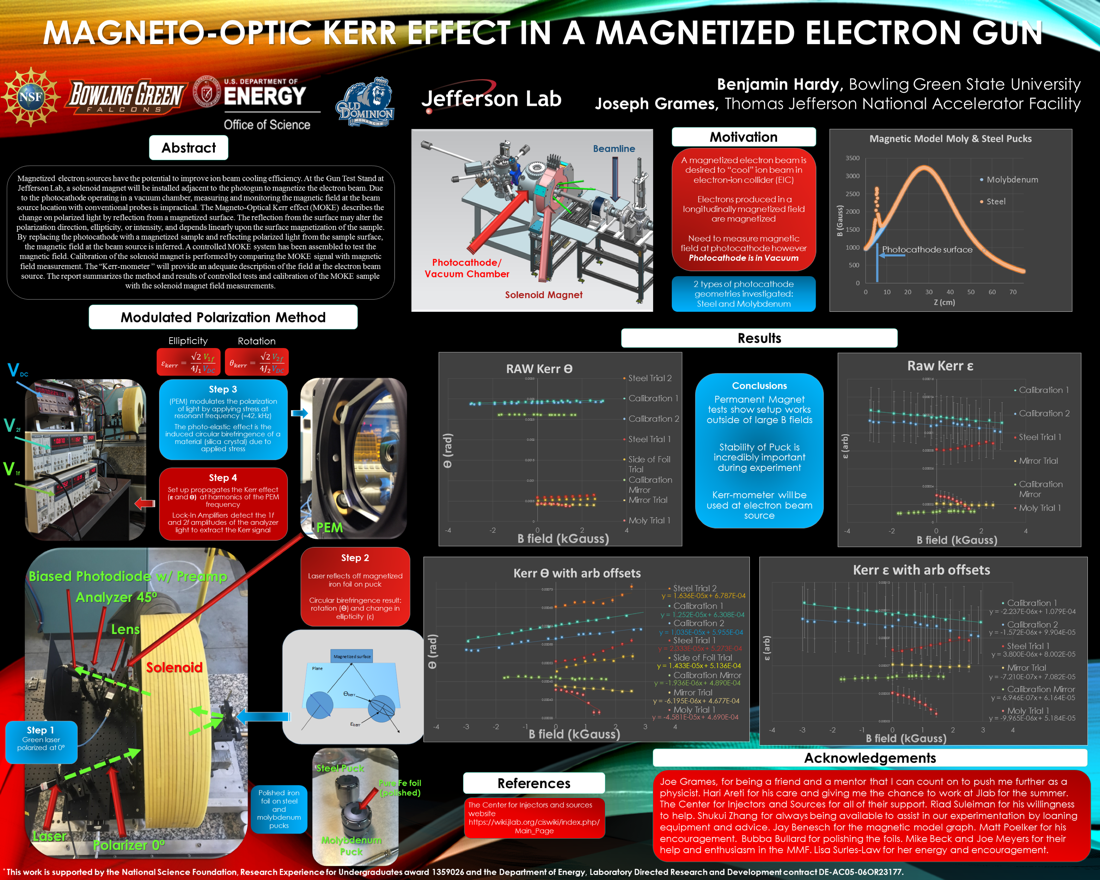Undergraduate Research at Jefferson Lab
Magneto-Optic Kerr Effect in a Magnetized Electron Gun
Student: Benjamin Hardy
School: Bowling Green State University
Mentored By: Joe Grames
Magnetized electron sources have the potential to improve ion beam cooling efficiency. At the Gun Test Stand at Jefferson Lab, a solenoid magnet will be installed adjacent to the photogun to magnetize the electron beam. Due to the photocathode operating in a vacuum chamber, measuring and monitoring the magnetic field at the beam source location with conventional probes is impractical. The Magneto-Optical Kerr effect (MOKE) describes the change on polarized light by reflection from a magnetized surface. The reflection from the surface may alter the polarization direction, ellipticity, or intensity, and depends linearly upon the surface magnetization of the sample. By replacing the photocathode with a magnetized sample and reflecting polarized light from the sample surface, the magnetic field at the beam source is inferred. A controlled MOKE system has been assembled to test the magnetic field. Calibration of the solenoid magnet is performed by comparing the MOKE signal with magnetic field measurements. The "Kerr-mometer"' will provide an adequate description of the field at the electron beam source. The report summarizes the method and results of controlled tests and calibration of the MOKE sample with the solenoid magnet field measurements.

Citation and linking information
For questions about this page, please contact Education Web Administrator.
